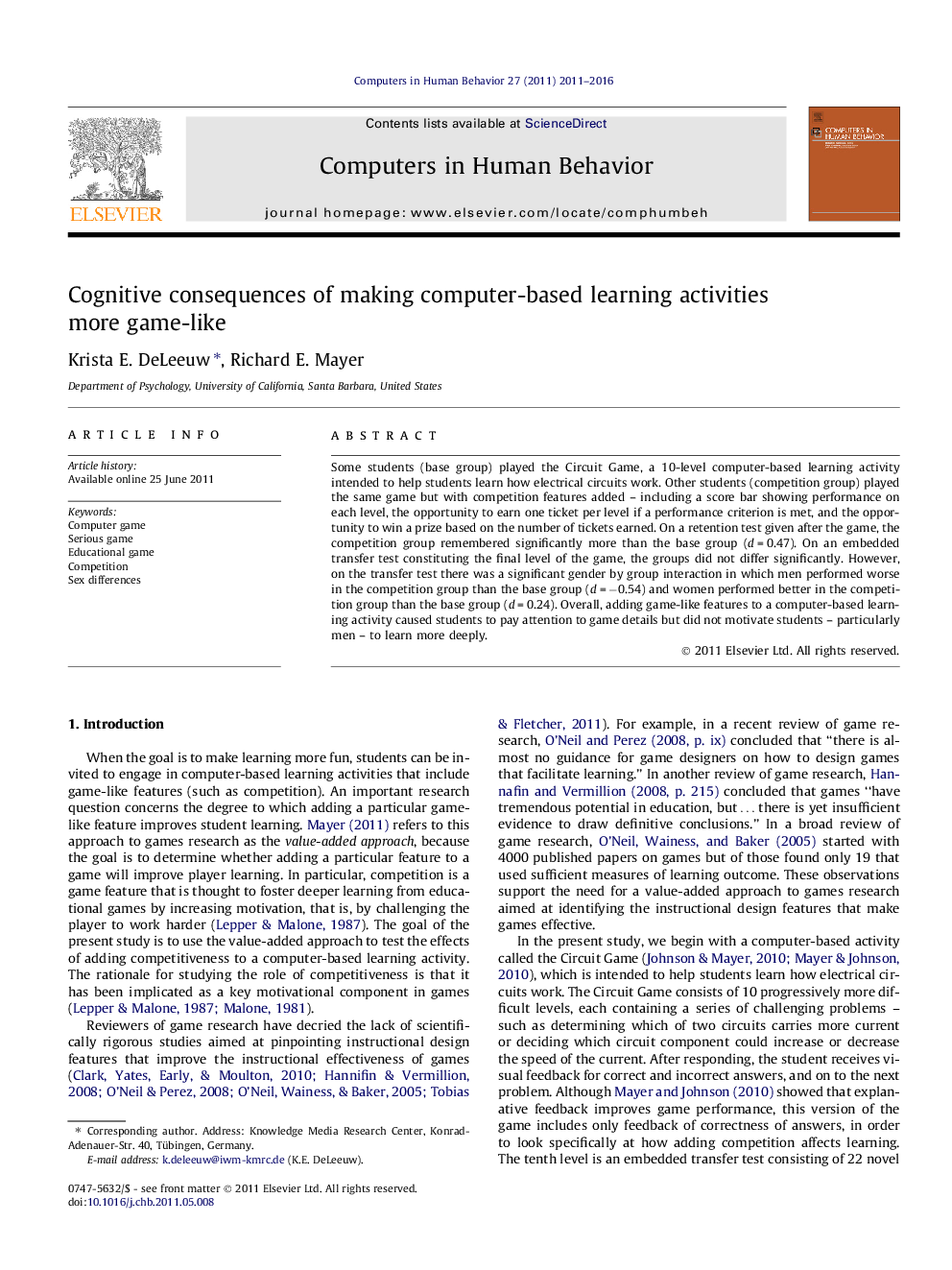| Article ID | Journal | Published Year | Pages | File Type |
|---|---|---|---|---|
| 351014 | Computers in Human Behavior | 2016 | 6 Pages |
Some students (base group) played the Circuit Game, a 10-level computer-based learning activity intended to help students learn how electrical circuits work. Other students (competition group) played the same game but with competition features added – including a score bar showing performance on each level, the opportunity to earn one ticket per level if a performance criterion is met, and the opportunity to win a prize based on the number of tickets earned. On a retention test given after the game, the competition group remembered significantly more than the base group (d = 0.47). On an embedded transfer test constituting the final level of the game, the groups did not differ significantly. However, on the transfer test there was a significant gender by group interaction in which men performed worse in the competition group than the base group (d = −0.54) and women performed better in the competition group than the base group (d = 0.24). Overall, adding game-like features to a computer-based learning activity caused students to pay attention to game details but did not motivate students – particularly men – to learn more deeply.
► We examine the added value of adding competition to an educational game. ► Students played the Circuit Game to learn about how electrical circuits work. ► Correct answers earned points toward a raffle (competition) or did not (control). ► Competition improved retention, but did not improve transfer of information. ► Competition decreased transfer performance for men, but not for women.
